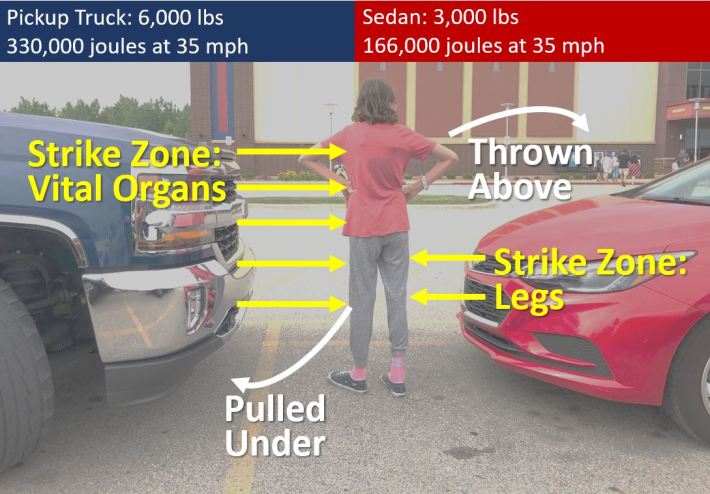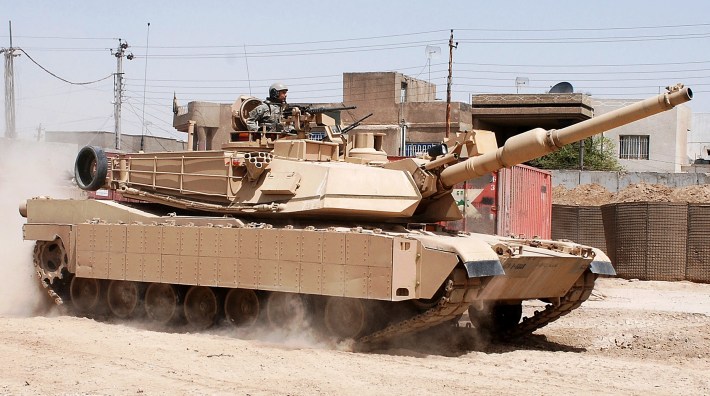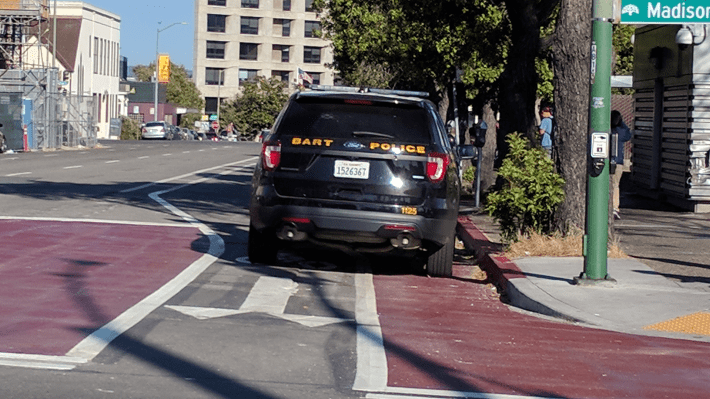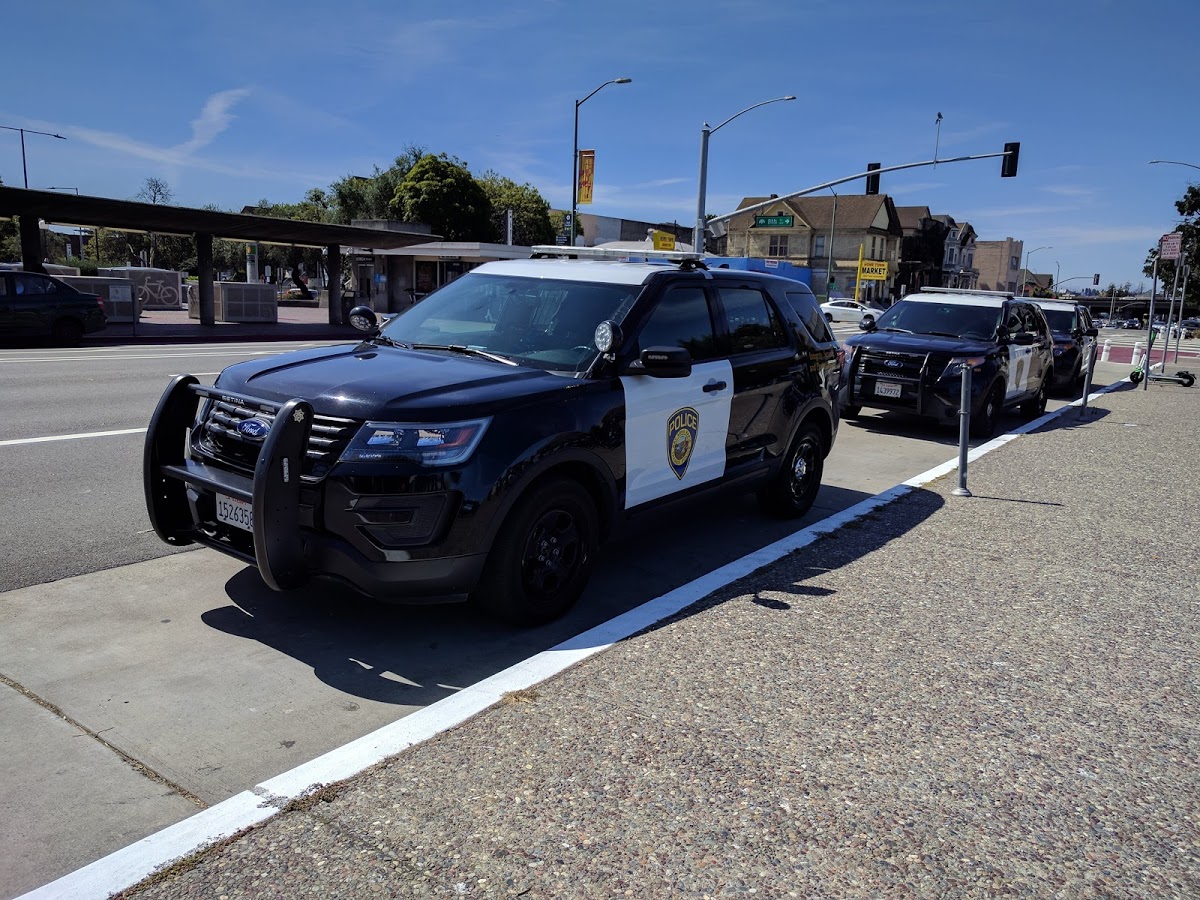Note: Metropolitan Shuttle, a leader in bus shuttle rentals, regularly sponsors coverage on Streetsblog San Francisco and Streetsblog Los Angeles. Unless noted in the story, Metropolitan Shuttle is not consulted for the content or editorial direction of the sponsored content.
The lead photo is a typical scene outside of the Lake Merritt BART station, across the street from BART police headquarters. For some reason, despite the large parking lot behind their building, and additional overflow parking under the freeway nearby, BART police still seem to find it necessary to leave their SUV cruisers illegally parked (see last image too).
But with 77 SUVs, maybe it's just hard to store them all.
The bigger question, of course is why does a transit police force of just 206 sworn officers need that many cars in the first place. That's .385 cars per officer. "40 of the 77 SUVs are black-and-white patrol vehicles. There are 31 SUVs (marked and unmarked) used by the Community Service Officers for parking enforcement and other tasks. There are six unmarked BPD SUVs for administrative use," clarified James Allison, a spokesperson for BART, in an email to Streetsblog.
Community Service Officers can't ride the trains to get to the parking lots to write tickets?
For some rough perspective, the San Francisco Police Department (going from what Streetsblog could find online) has 338 cars and 2,108 officers. That comes to .16 cars per officer. SBSF has a request in for more exact data and will update accordingly. A BART official said it's unfair to compare SFPD, because BART covers four counties. But that does seem fair to Streetsblog, considering that BART PD also has BART at their disposal to get around.
Furthermore, the California Highway Patrol, which surely needs more cars than any other police force in the state, has 2,316 cars, SUVs, and all-terrain vehicles. At 7,598 officers, the ratio is roughly .30 cars per officer (CHP also uses 400 motorcycles and a smattering of other vehicles). Streetsblog also has requests for numbers of cars per cop in to Oakland Police and a few agencies in other regions.
Meanwhile, BART's SUVs are called Ford Police Interceptor Utility vehicles and they are the law-enforcement variant on the Ford Explorer. The cars, which have a 365 hp engine, get about 17 mpg. Four are hybrids, explained Allison. The hybrids get 24 mpg. The SUVs, when fully outfitted, cost $45,000 each. "The vehicles are purchased on the contract with the State of California (California Highway Patrol) so BART PD receives the same pricing."
Okay, so maybe they save some money by combining purchases with CHP, but they could save even more money if they didn't buy them in the first place. Besides, they still have to maintain and fuel these beasts. Why does a transit police force need such large, high-horsepower cars with "killer grills" on the front--it's not as if they're regularly (or ever) pushing cars to the shoulder of the freeway, like CHP has to do.
This matters, because as Streetsblog has previously reported, SUVs are dangerous to pedestrians and cyclists.

The grills just make that situation worse. However, "They can be used to push through a fence, clear debris or to push disabled vehicles off the road. One could imagine this could be a critical tool in the aftermath of a natural disaster such as an earthquake," explained Allison.
It's unclear how this applies for transit police. Are they going to push through a BART tunnel? Can a police car with a grill push through a pile of rubble, but it can't without the grill? On the other hand, they could also buy M1 Abrams tanks. Those would be pretty useful for pushing through debris after an earthquake (maybe we shouldn't give BART PD any ideas).

In press reports at least, BART police justify having cars because most crimes don't occur on trains, but rather at stations. So the cars give them flexibility. "PD said that response time was consistently faster to drive from station to station. My colleagues were definitely interested in fast response times, but also saw value in more BART PD presence on trains," wrote former BART board president Tom Radulovich, in an email to Streetsblog.
Fair enough. But in our view it strains credibility to believe that a transit police force needs quite so many heavy automobiles--especially for community service officers and parking enforcement. Yes, the police need some cars. And maybe they need a certain number of SUVs or trucks. But police forces should be using safe, fuel-efficient cars.
Most importantly, whenever possible, BART police and community service officers should be riding the trains alongside the passengers they're paid to serve. If they've got this many cars, that isn't happening.






